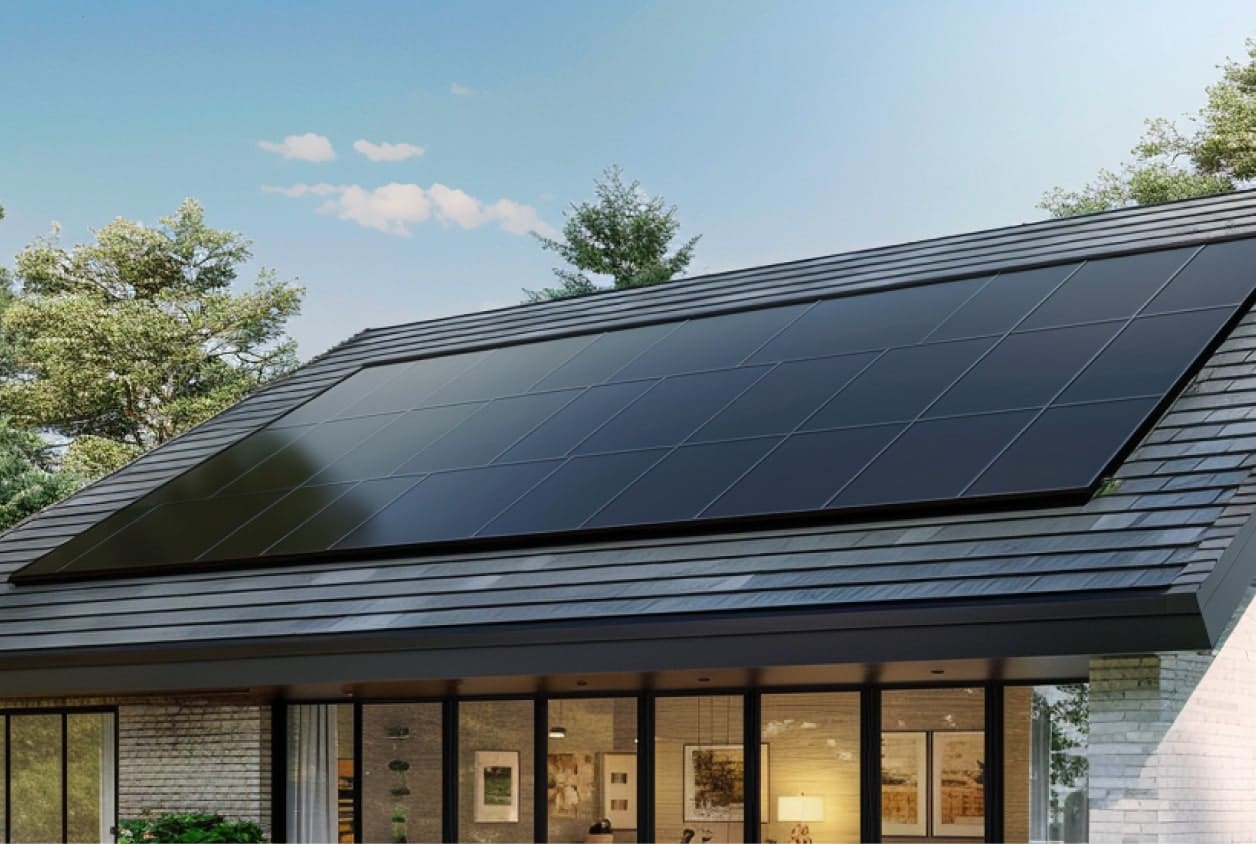Advancements in Solar Photovoltaic Technology and Alignment with Sustainable Development Goals
Recent developments in solar cell technology indicate a significant shift towards materials that maximize energy capture, directly supporting the United Nations Sustainable Development Goals (SDGs), particularly SDG 7 (Affordable and Clean Energy). The transition from conventional blue silicon to black silicon represents a critical innovation for increasing the efficiency and economic viability of solar power, thereby accelerating progress towards global climate and sustainability targets.
The Transition to Black Silicon for Enhanced Energy Efficiency
Limitations of Conventional Solar Cells
Historically, the majority of silicon solar cells on the market have a blue appearance. This coloration is an indicator of inefficiency, as it signifies that blue wavelengths of light are being reflected rather than absorbed and converted into electricity. This energy loss presents a barrier to achieving maximum efficiency in solar energy systems.
- Conventional cells reflect a portion of the light spectrum, reducing potential energy generation.
- This inefficiency necessitates larger installations to meet energy demands, impacting land use and overall system cost.
The Innovation of Black Silicon
Researchers have developed “black silicon” through a process of nano-texturing the silicon surface. This creates a microscopic forest of needles that traps incoming light, drastically reducing reflectivity to less than 1%. This innovation directly contributes to several SDGs:
- SDG 7 (Affordable and Clean Energy): By capturing nearly all available light, black silicon cells are significantly more efficient, generating more clean electricity from the same surface area.
- SDG 12 (Responsible Consumption and Production): Higher efficiency means more energy is produced per unit of raw material, promoting more sustainable production patterns in the energy sector.
Economic Viability and Contribution to SDG 7
Overcoming Production Cost Barriers
While initial manufacturing processes for black silicon were deemed too expensive for mass production, recent advancements have made it economically feasible. A comprehensive economic analysis revealed that despite higher initial processing costs, the overall cost per unit of power is substantially lower.
- Initial production methods like cryogenic reactive ion etching were cost-prohibitive.
- Newer, inexpensive techniques such as metal-assisted chemical etching have enabled scalable production.
- Economic studies confirm that even with more expensive processes, the final cost per watt of power generated is reduced.
Cost-Benefit Analysis and Market Impact
The economic case for black silicon is compelling and is poised to reshape the renewable energy market in line with SDG targets.
- While processing costs for black silicon cells are 15.8% to 25.1% higher than conventional cells, the gains in efficiency lead to a 10.8% reduction in the overall cost per unit of power.
- This cost reduction reinforces solar power’s position as the cheapest source of electricity in history, making it more accessible and furthering the goals of SDG 7.
- The lower cost per watt has a cascading effect, reducing the overall expense of solar systems, including land, racking, and labor costs.
Broader Implications for Sustainable Development
Impact on Global Energy Infrastructure and Climate Action
The widespread adoption of black silicon technology will accelerate the global transition to renewable energy, which is fundamental to achieving key sustainable development outcomes.
- SDG 13 (Climate Action): By making solar power cheaper and more efficient, this technology facilitates a faster shift away from fossil fuels, directly addressing the climate crisis.
- SDG 11 (Sustainable Cities and Communities): More affordable and efficient solar installations support the development of sustainable energy infrastructure for both residential and commercial use in urban and rural areas.
Fostering Innovation and Industrial Growth
The technological breakthrough of black silicon is expected to ignite intense international competition, driving further innovation and investment in the renewable energy sector.
- This development aligns with SDG 9 (Industry, Innovation, and Infrastructure) by stimulating an industrial “arms race” to bring advanced solar manufacturing to market.
- This competition will drive down consumer prices for solar electricity, further increasing its adoption and contributing to a virtuous cycle of sustainable industrial growth and clean energy deployment.
Analysis of Sustainable Development Goals in the Article
1. Which SDGs are addressed or connected to the issues highlighted in the article?
- SDG 7: Affordable and Clean Energy: The entire article focuses on advancements in solar energy technology, a key source of clean energy. It discusses making this energy more affordable and efficient.
- SDG 9: Industry, Innovation, and Infrastructure: The text details a specific technological innovation (black silicon) and its impact on the solar manufacturing industry, including new processes (dry etching, wet chemistry) and the “arms race” to upgrade industrial capabilities.
- SDG 8: Decent Work and Economic Growth: The article connects technological upgrading directly to economic productivity. It explains how efficiency gains lead to significant cost reductions, impacting the economics of the entire solar industry and promoting growth.
- SDG 13: Climate Action: While not explicitly mentioned, improving the efficiency and lowering the cost of solar power is a fundamental strategy for climate action. The article states that the cost drop “will also ignite another wave of increased solar deployment,” which is a primary method for transitioning away from fossil fuels to combat climate change.
2. What specific targets under those SDGs can be identified based on the article’s content?
-
Under SDG 7 (Affordable and Clean Energy):
- Target 7.2: By 2030, increase substantially the share of renewable energy in the global energy mix. The article supports this by describing a technological breakthrough that makes solar power cheaper and more efficient, which will “ignite another wave of increased solar deployment.”
- Target 7.a: By 2030, enhance international cooperation to facilitate access to clean energy research and technology… and promote investment in energy infrastructure and clean energy technology. The article highlights research from a “Finnish research team” and describes an “arms race between China, Europe and the U.S.” to develop and market black silicon, which represents a massive global investment and focus on advancing clean energy technology.
-
Under SDG 9 (Industry, Innovation, and Infrastructure):
- Target 9.4: By 2030, upgrade infrastructure and retrofit industries to make them sustainable, with increased resource-use efficiency and greater adoption of clean and environmentally sound technologies. The development of black silicon, which is “more efficient at capturing light,” is a direct example of adopting a cleaner and more efficient technology in the solar manufacturing industry. The article notes that more efficient cells mean “you need less land or roof area,” which is a clear increase in resource-use efficiency.
- Target 9.5: Enhance scientific research, upgrade the technological capabilities of industrial sectors… encouraging innovation. The article is centered on this target, detailing the scientific research behind black silicon (“nano-texturing silicon,” “dry etching process”) and the industry-wide shift to upgrade from “common blue-colored silicon solar cells” to this new, superior technology.
-
Under SDG 8 (Decent Work and Economic Growth):
- Target 8.2: Achieve higher levels of economic productivity through… technological upgrading and innovation. The article provides a direct link by stating that the innovation of black silicon leads to higher efficiency which “far outweighed those extra costs,” resulting in an overall drop in “the cost per unit power… by 10.8%.” This reduction in cost per unit of output is a direct measure of increased economic productivity.
3. Are there any indicators mentioned or implied in the article that can be used to measure progress towards the identified targets?
- Cost per unit of energy: The article explicitly states that “the costs per unit power for black silicon solar cells dropped more than 10%” and that “the cost per unit power dropped by 10.8%.” This is a direct indicator for measuring progress in making clean energy more affordable (SDG 7) and for tracking increases in economic productivity (SDG 8).
- Energy efficiency of technology: The article discusses the superior efficiency of black silicon, noting its reflectivity is “less than 1%,” meaning it is “more efficient at capturing light.” This improved efficiency is an indicator of technological upgrading and innovation (SDG 9).
- Resource-use efficiency: An implied indicator is the reduction in land or area required for the same power output. The article notes, “If you have more efficient cells you need less land or roof area,” which is a measurable indicator of progress towards Target 9.4.
- Rate of renewable energy deployment: The article predicts “another wave of increased solar deployment” as a result of the cost reductions. The rate of this deployment can serve as an indicator for progress towards increasing the share of renewable energy (Target 7.2).
4. Table of SDGs, Targets, and Indicators
| SDGs | Targets | Indicators |
|---|---|---|
| SDG 7: Affordable and Clean Energy | 7.2: Increase the share of renewable energy. 7.a: Promote investment in clean energy technology. |
– Reduction in cost per unit of power (“costs per unit power… dropped more than 10%”). – Rate of “increased solar deployment.” – International “arms race” to develop and market the technology, implying investment. |
| SDG 9: Industry, Innovation, and Infrastructure | 9.4: Upgrade industries with increased resource-use efficiency and clean technologies. 9.5: Enhance scientific research and upgrade technological capabilities. |
– Increased light-capturing efficiency of solar cells (reflectivity less than 1%). – Reduced need for land/roof area for equivalent power output. – Industry-wide shift from blue to black silicon technology. |
| SDG 8: Decent Work and Economic Growth | 8.2: Achieve higher levels of economic productivity through technological upgrading. | – Overall drop in the cost per unit power by 10.8%, indicating a direct increase in economic productivity for the solar sector. |
| SDG 13: Climate Action | (Implied) Promote mechanisms for effective climate change-related planning and management. | – Increased deployment of solar power, a key technology for reducing greenhouse gas emissions. |
Source: forbes.com







